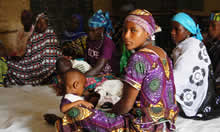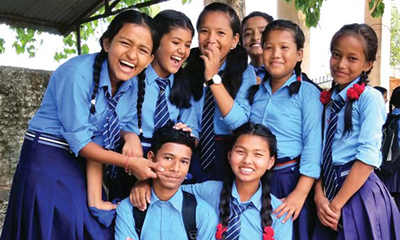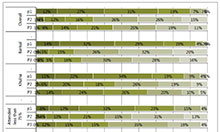Maternal, Infant, Young Child, and Adolescent Nutrition
The best start in life begins with good nutrition in the first 1,000 days but doesn't end there.
Good Nutrition Across the Life Cycle
When it comes to malnutrition, low and medium income countries (LMIC) are increasingly facing a double burden. While rates of undernutrition among women and children remain high, countries are also experiencing a rise in obesity.
Rolling back this trend requires sustained multi-sectoral approaches throughout the human life cycle, especially in the first 1,000 days from pregnancy through a child’s second birthday. Maternal, infant, young child, and adolescent nutrition (MIYCAN) interventions are at the heart of SPRING's work to address malnutrition in all its forms.
SPRING's Approach
SPRINGing to Action
We recognize that there is no “one-size-fits-all” approach to MIYCAN—effective programs must be both comprehensive and targeted to the needs of mothers, infants, young children, and adolescents in each country. Read on to explore how we have integrated the five pillars into a variety of targeted MIYCAN programs across SPRING countries since 2011.
Maternal Nutrition
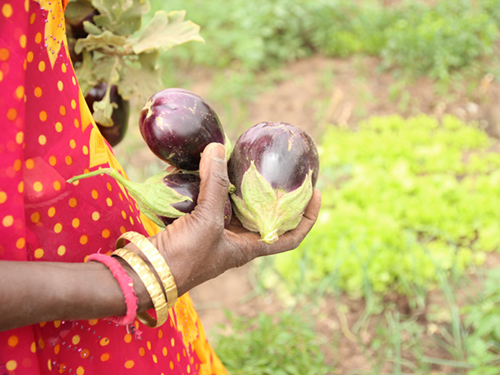
When we assess women’s nutrition we are not just concerned with maternal height, weight, and other physiological conditions related to their reproductive roles. We take a much broader view by assessing the socio-cultural conditions that are too often overlooked, but essential to sustain improved nutritional outcomes.
With this broad view, we look for ways to simultaneously improve maternal nutrition and advance women’s role within a society, within the context of comprehensive infant and young child nutrition programming.
Pillar 1: Training
- In Bangladesh, Ghana and Senegal, SPRING trained agriculture extension workers to support rural women to improve their agricultural skills to grow and raise nutrient-rich food for a diverse diet while also becoming more economically independent by getting their quality products to markets.
- SPRING also promoted the training of health workers to include maternal nutrition along with IYCF.
Pillar 2: Research
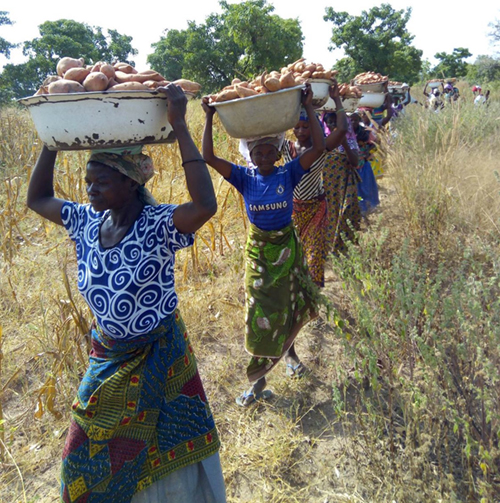
- In Africa’s Sahel, SPRING conducted qualitative research on how spousal communication is influenced by community video.
- SPRING conducted barrier analysis on acceptability of growing sweet potatoes and cowpeas in the off season in Guinea to increase their availability. We also conducted rapid qualitative assessment of barrier and enablers to consumption of Vitamin A-rich sweet potato leaves and protein-rich cowpeas by pregnant and lactating women and children 6-23 months.
- SPRING assessed women’s dietary diversity in the Kyrgyz Republic and the impact of project activities to promote dietary diversity pre- and post-intervention.
- In Sierra Leone, we conducted barrier analysis on the consumption of fish and pumpkin by pregnant and lactating women and children 6-23 months. Our work led to adapted value chain analysis to identify nutrition-sensitive agricultural practices to improve access to these nutritious foods.
Pillar 3: Policy
- In Kyrgyz Republic, SPRING worked with the national government to finalize the National Technical Guidelines on Anemia Prevention and Treatment and supported the roll out of the guidelines.
- Also in the Kyrgyz Republic, we assisted the government to develop a new clinical protocol for deworming and helminth infection prevention.
Pillar 4: Systems Strengthening
Pillar 5: Implementation Design
- Through the use of cooking demonstrations and development of cook books, we promoted diet diversity and consumption of healthy diets.
- To address problems of overweight and poor diets, we supported the promotion against the regular consumption of junk foods in the Kyrgyz Republic.
- In Ghana, we worked with voluntary savings and loans groups to promote nutrition and we established saving and loan programs within existing mother-to-mother support groups so mothers could purchase more nutritious foods for their families.
Infant and Young Child Nutrition
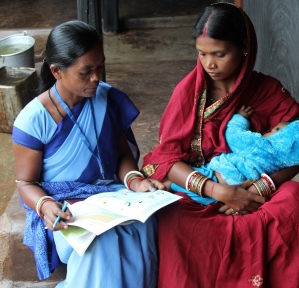
We know what works to improve infant and young child nutrition during the critical first 1,000 days from pregnancy until a child’s second birthday. The evidence is clear, especially when it comes to breastfeeding. Children 0-5 months who are not breastfed are more than 14 times more likely to die than children who are exclusively breastfed. Appropriate complementary feeding of children 6-23 months prevents 6 percent of child deaths in this age group and is a central theme in all of our country programs. Through the promotion of exclusive breastfeeding, dietary diversity, frequency of feeding, complementary feeding, and micronutrient fortification and supplementation, SPRING has supported countries and programs while also adding to the global body of knowledge.
Pillar 1: Training
- We supported the Baby Friendly Hospital Initiative in Kyrgyz Republic, enabling 17 health facilities to gain certification, with more certifications expected. Exclusive breastfeeding rates increased in Kyrgyz by 117%
- Within the context of HIV/AIDS, with support from PEPFAR, MIYCAN trainings were conducted in Nigeria, Haiti and Uganda. In Nigeria, SPRING focused on strengthening facility and community IYCF counseling and OVC programming.
Pillar 2: Research
- SPRING conducted an evaluation and costing study of approaches to the distribution of micronutrient powders (MNPs) in Uganda
- Impact was demonstrated in Burkina Faso where SPRING conducted an evaluation of specific IYCF behavior changes.
- To contribute to the evidence on effective programming, SPRING conducted an evaluation of the UNICEF community IYCF counseling package in Nigeria.
- SPRING also conducted trials of improved practices in Sierra Leone on BabyWASH and complementary feeding of Vitamin A rich foods.
- In Uganda, a study is ongoing on the use of fortified flour for school meals.
Pillar 3: Policy
- SPRING worked with the Government of Uganda on national guidelines around food fortification of cereals and oils and anemia prevention and control.
- In the Kyrgyz Republic, SPRING and partners are working with the government on deworming protocols.
Pillar 4: Systems Strengthening
- SPRING worked with support groups in Sierra Leone, Nigeria, Ghana, Kyrgyz Republic and Uganda to develop approaches that linked the groups to a range of nutrition services, including community-based and facility-based, just mothers, mixed male and female groups and father’s groups.
- In Ghana, we worked with district health staff and individual health facilities in Northern and Upper East Regions to implement quality improvement approaches for growth monitoring promotion and to strengthen the quality of nutrition counseling and demand for services.
- We included supportive supervision in three country programs in Bangladesh, Ghana, and Kyrgyz Republic.
Pillar 5: Implementation Design
- Video was an essential social and behavior change tool used in a few countries.
- SPRING introduced community video was to mobilize and inform communities around nutrition in Burking Faso and Niger.
- Demonstration videos were developed on breastfeeding techniques in Ghana, where health workers downloaded a video onto their phones to help demonstrate to mothers how to attach babies to the breast.
- Community media and mass communications programs promoted nutrition in Burkina Faso, Guinea, Niger, Nigeria, Senegal, and Sierra Leone.
- Using the 1000-days approach, in Kyrgyz Republic, we worked with community activists to reach families in rural areas and developed an urban communications approach.
- In Ghana the 1,000 day household concept mobilized households, communities, and district and regional resources to co-locate multi-sectoral inputs, including WASH, nutrition, agriculture, to reach those most in need- 1000 day household.
Adolescent Nutrition
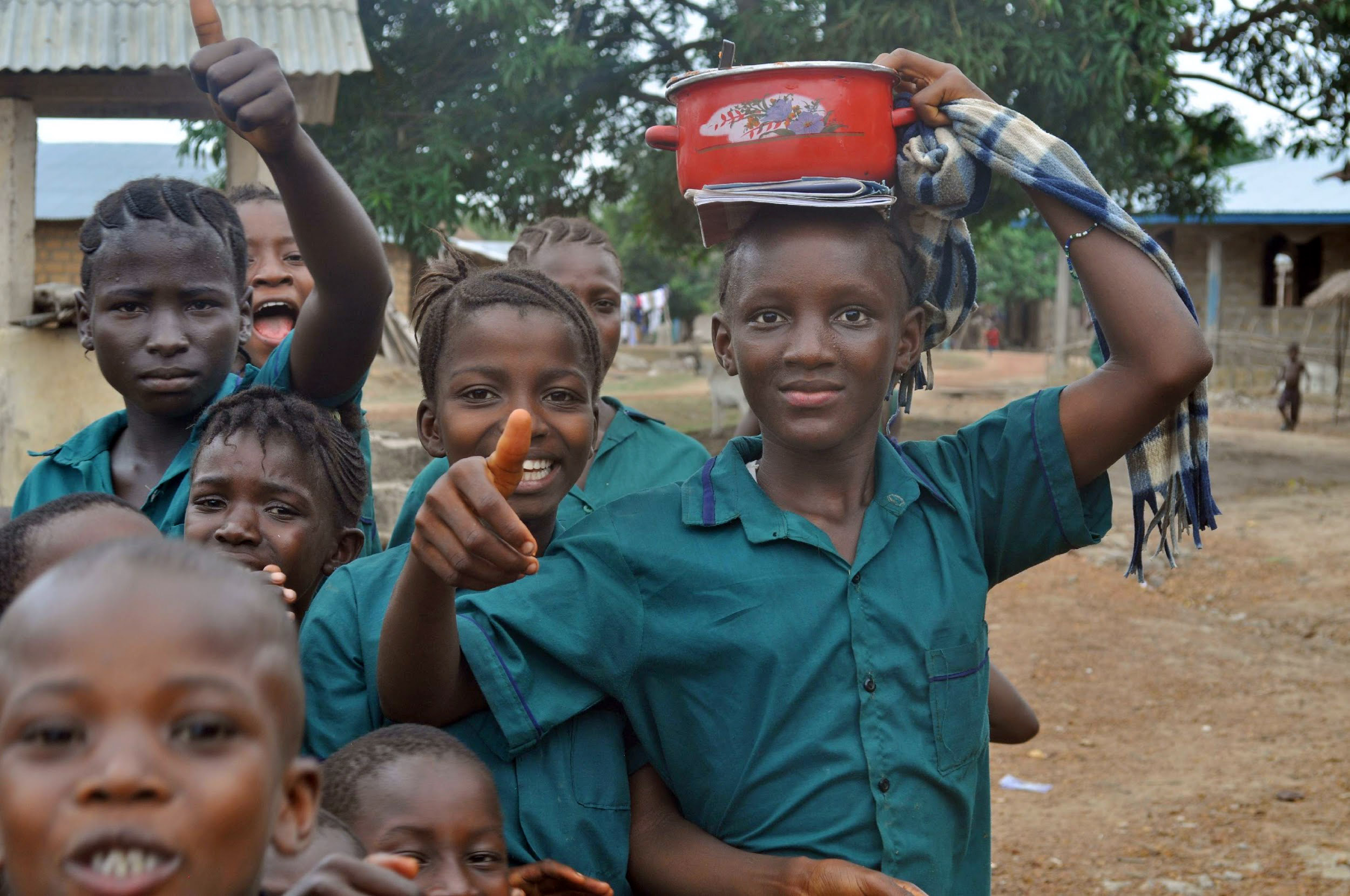
SPRING works with stakeholders to go beyond the 1,000-day window to reach adolescent girls whose nutritional status is too often overlooked.
Although we know that early marriage and pregnancy contribute to poor adolescent nutrition, we need to know more about the needs of adolescent girls based on country contexts. That is why SPRING invests in research with our partners to identify the best, evidence-based strategies to improve the diet and eating practices of adolescent girls and their future families.
Pillar 1: Training
- SPRING developed a nutrition curriculum for partners working with orphans and other vulnerable children from 2 to17 years of age.
Pillar 2: Research
- Our work with the WHO led to a systematic review on adolescent nutrition related to diet and eating practices.
Pillar 3: Policy
- We co-led a high-level technical meeting on the diet and eating practices of adolescent girls and women of reproductive age with USAID and the Pan American Health Organization. Participants reviewed insights and lessons-learned to help identify next steps in developing global guidance. With WHO, SPRING convened a technical working group to develop consolidated guidelines on adolescent nutrition.
Pillar 4: Systems Strengthening
- In Uganda, to improve diet quality, fortified flours are being promoted for school meals to also increase demand while supply of fortified flours is being promoted among small maize millers.
Pillar 5: Implementation Design
SPRINGing Forward
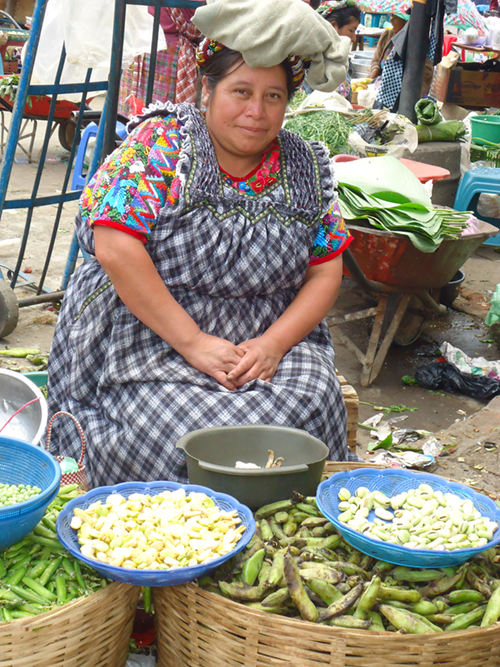
Looking ahead, the global nutrition community should focus on:
Scaling up evidence-based interventions that can address both over- and under-nutrition, especially in urban communities where SPRING has not traditionally focused.
Scaling up evidence-based approaches that addresses the nutrition and health needs of adolescent girls and women, as well as infants and children.
More research on dietary beliefs and practices of women and children especially of adolescent girls in LMIC and how best to reach these girls in a variety of settings both rural and urban.
Using barrier analysis and implementation research to examine specific practices and beliefs that influence MIYCAN from the home and community level to the health and food system level.
Incorporating more systems thinking throughout program design, implementation, and evaluation of multi-sectoral approaches to nutrition.
More holistic social and behavior change strategies to target the entire family and community, not just mothers and children. More activities are especially needed for pregnant, lactating and pre-pregnant women (women of reproductive age and adolescent girls) to enhance their participation in economic and social life.
Evaluate the impact of integrated multi-sectoral nutrition-sensitive and nutrition-specific interventions on nutritional status and on proximate and distal determinants of nutritional status of women and children. Investigate what are the key metrics for an integrated nutrition-sensitive and nutrition-specific intervention?
Related Resources
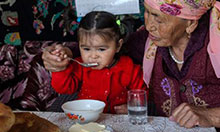
SPRING in the Kyrgyz Republic: Evidence of Significant Improvement in Nutrition Practices
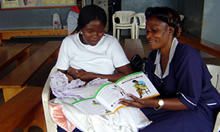
SBCC Pathways for Improved Maternal, Infant, and Young Child Nutrition Practices
